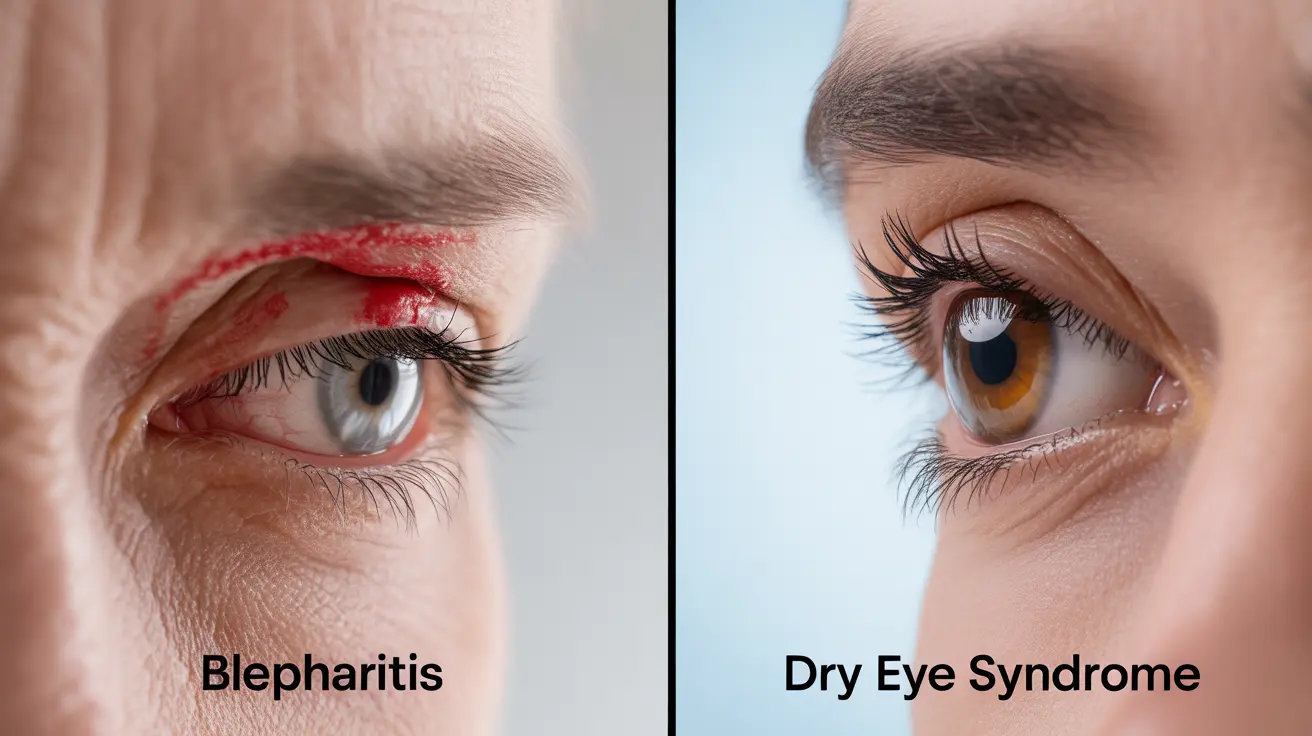If you're experiencing eye discomfort, redness, or irritation, you might be wondering whether you have blepharitis or dry eye syndrome. While these two conditions can share similar symptoms, understanding their distinct characteristics is crucial for proper treatment and management.
In this comprehensive guide, we'll explore the key differences between blepharitis and dry eye, their relationship to each other, and effective treatment strategies for both conditions.
Understanding Blepharitis and Dry Eye
Blepharitis is an inflammation of the eyelids, particularly affecting the area where your eyelashes grow. This condition often involves bacterial overgrowth and buildup of debris around the eyelid margins. Dry eye, on the other hand, occurs when your eyes don't produce enough tears or when tears evaporate too quickly, leading to insufficient lubrication.
Distinguishing Characteristics
Blepharitis Symptoms
Key indicators of blepharitis include:
- Crusty or flaky eyelids, especially in the morning
- Swollen, red eyelid margins
- Burning or stinging sensation
- Itchy eyelids
- Feeling like there's something in your eye
- Eyelashes that appear greasy or matted
Dry Eye Symptoms
Common signs of dry eye include:
- Persistent burning or stinging
- Sandy or gritty sensation
- Blurred vision that improves with blinking
- Light sensitivity
- Difficulty wearing contact lenses
- Watery eyes (as a response to irritation)
The Connection Between Both Conditions
Blepharitis and dry eye often have a complex, interconnected relationship. Blepharitis can disrupt the proper function of the meibomian glands, which produce the oily layer of tears. This disruption can lead to increased tear evaporation and subsequent dry eye symptoms. Conversely, chronic dry eye can create conditions that make blepharitis more likely to develop.
Treatment Approaches
Managing Blepharitis
Effective blepharitis treatment typically includes:
- Daily eyelid hygiene routine
- Warm compresses to soften debris
- Gentle eyelid massage
- Eyelid scrubs with dedicated cleaners
- Antibacterial treatments when prescribed
Addressing Dry Eye
Key treatments for dry eye include:
- Artificial tears or lubricating eye drops
- Lifestyle modifications to reduce eye strain
- Omega-3 fatty acid supplements
- Prescription medications when necessary
- Environmental modifications to reduce tear evaporation
Prevention and Lifestyle Changes
Several habits can help prevent or minimize symptoms of both conditions:
- Regular eyelid cleaning
- Proper hand hygiene
- Taking regular breaks from digital devices
- Maintaining good hydration
- Using a humidifier in dry environments
- Protecting eyes from wind and environmental irritants
When to Seek Professional Help
Consult an eye care professional if you experience:
- Severe or persistent eye pain
- Significant vision changes
- Symptoms that don't improve with home treatment
- Signs of infection
- Extreme light sensitivity
- Inability to perform daily activities due to eye discomfort
Frequently Asked Questions
What's the difference between blepharitis and dry eye, and how can I tell which one I have? Blepharitis primarily affects the eyelids with inflammation, crusting, and redness along the lid margins, while dry eye causes a burning sensation and feeling of dryness throughout the eye. However, a proper diagnosis from an eye care professional is recommended as these conditions often coexist.
Can blepharitis cause dry eye, or is it the other way around? Both conditions can influence each other. Blepharitis can disrupt tear production and quality, leading to dry eye. Similarly, chronic dry eye can create conditions that promote blepharitis development. This relationship often creates a cycle that requires addressing both conditions for effective treatment.
What are the most effective treatments for blepharitis and dry eye at home? For blepharitis, warm compresses and gentle eyelid cleansing are most effective. For dry eye, artificial tears and environmental modifications like using a humidifier can help. Both conditions benefit from good eyelid hygiene and regular breaks from digital devices.
Are there lifestyle changes or habits that help prevent blepharitis and dry eye symptoms? Yes, maintaining good eyelid hygiene, staying hydrated, taking regular breaks from screen time, protecting eyes from environmental irritants, and using proper eye care products can help prevent both conditions.
How do I know if I need to see a doctor for my red, irritated, or dry eyes? Seek medical attention if you experience severe pain, vision changes, symptoms that don't improve with home treatment, signs of infection, or if your symptoms significantly impact daily activities.




